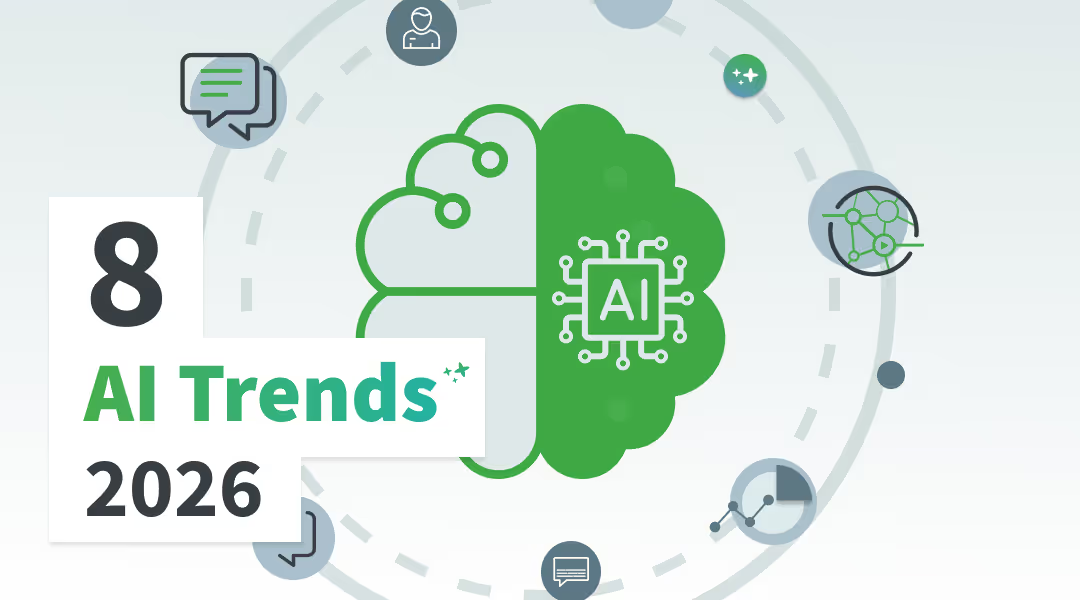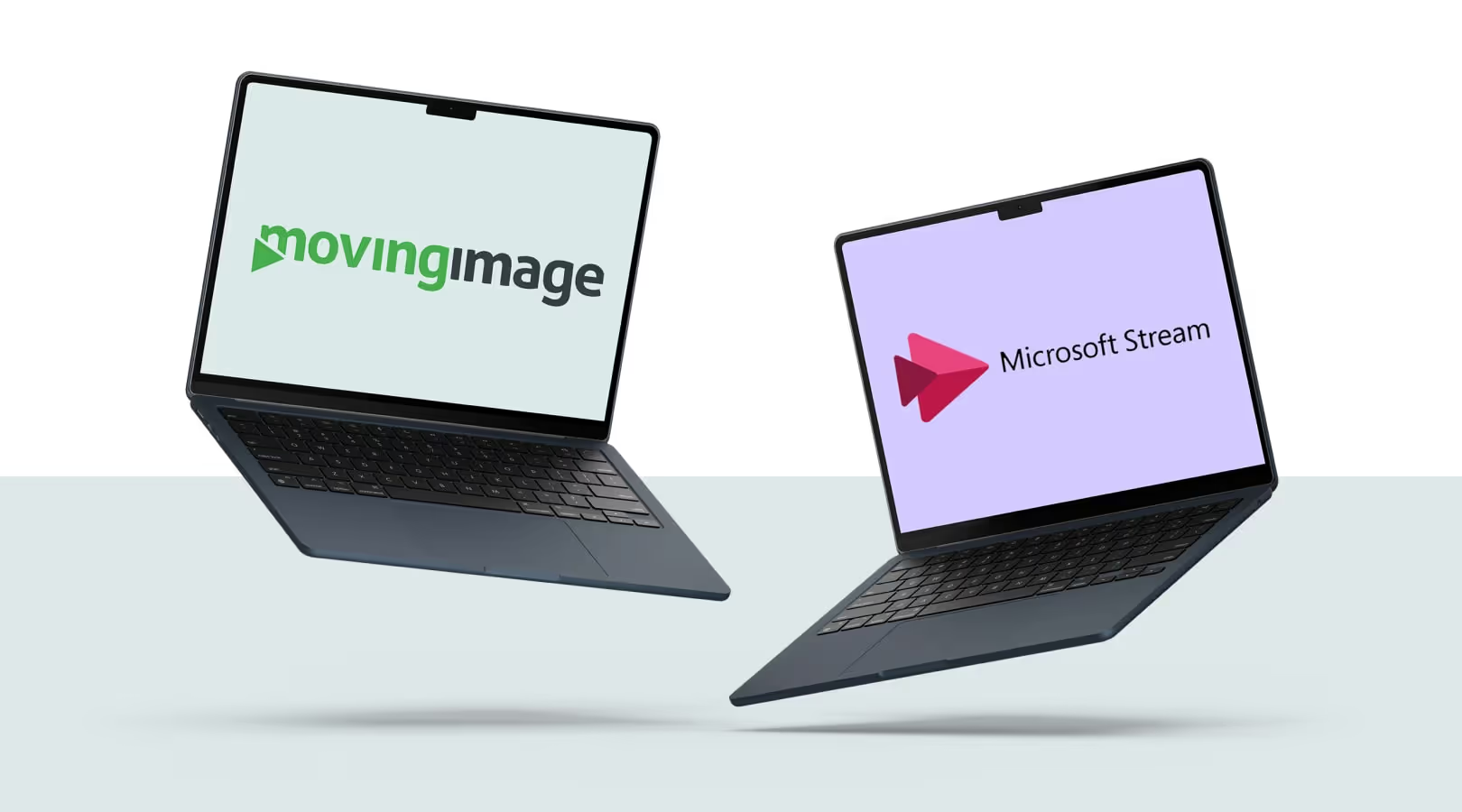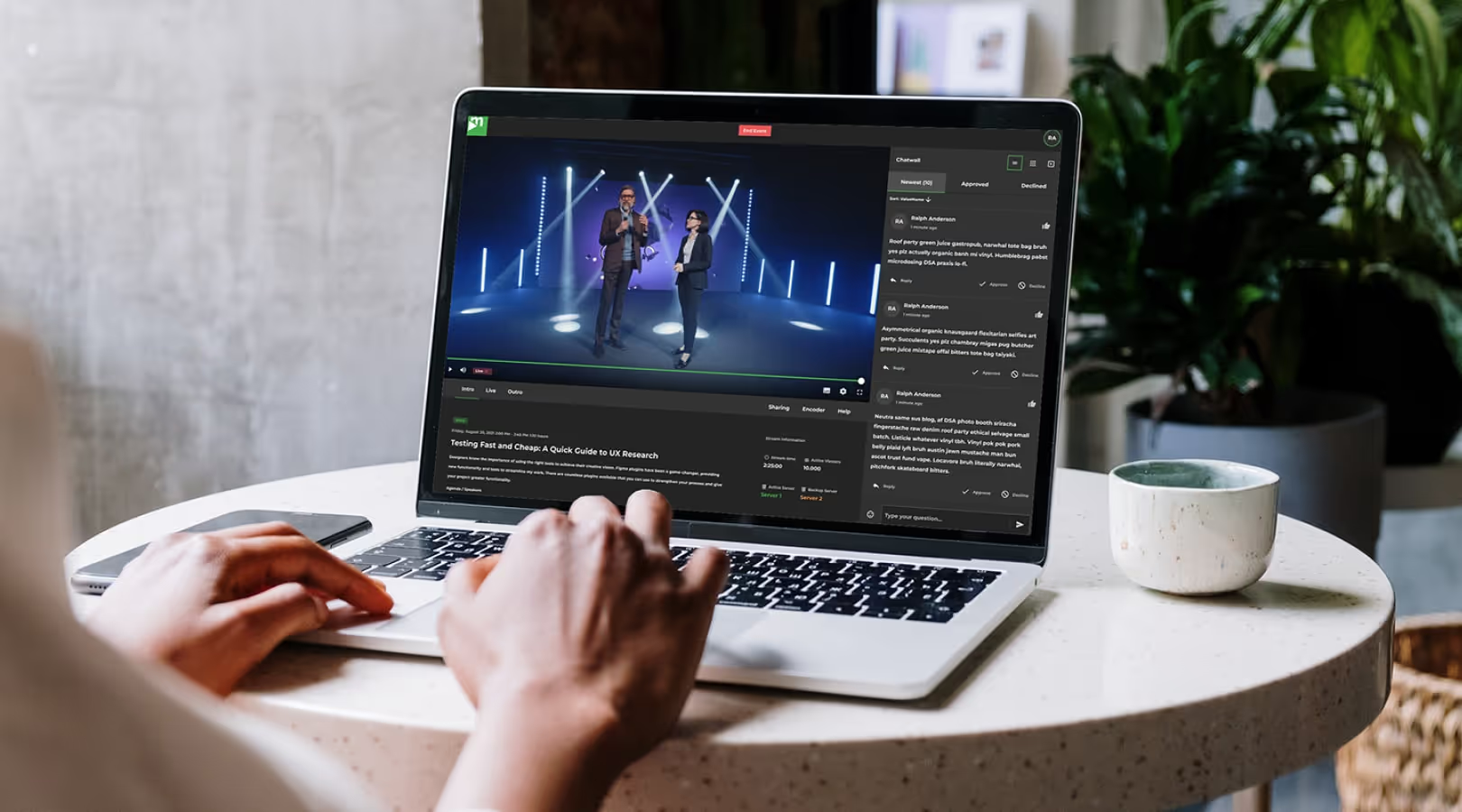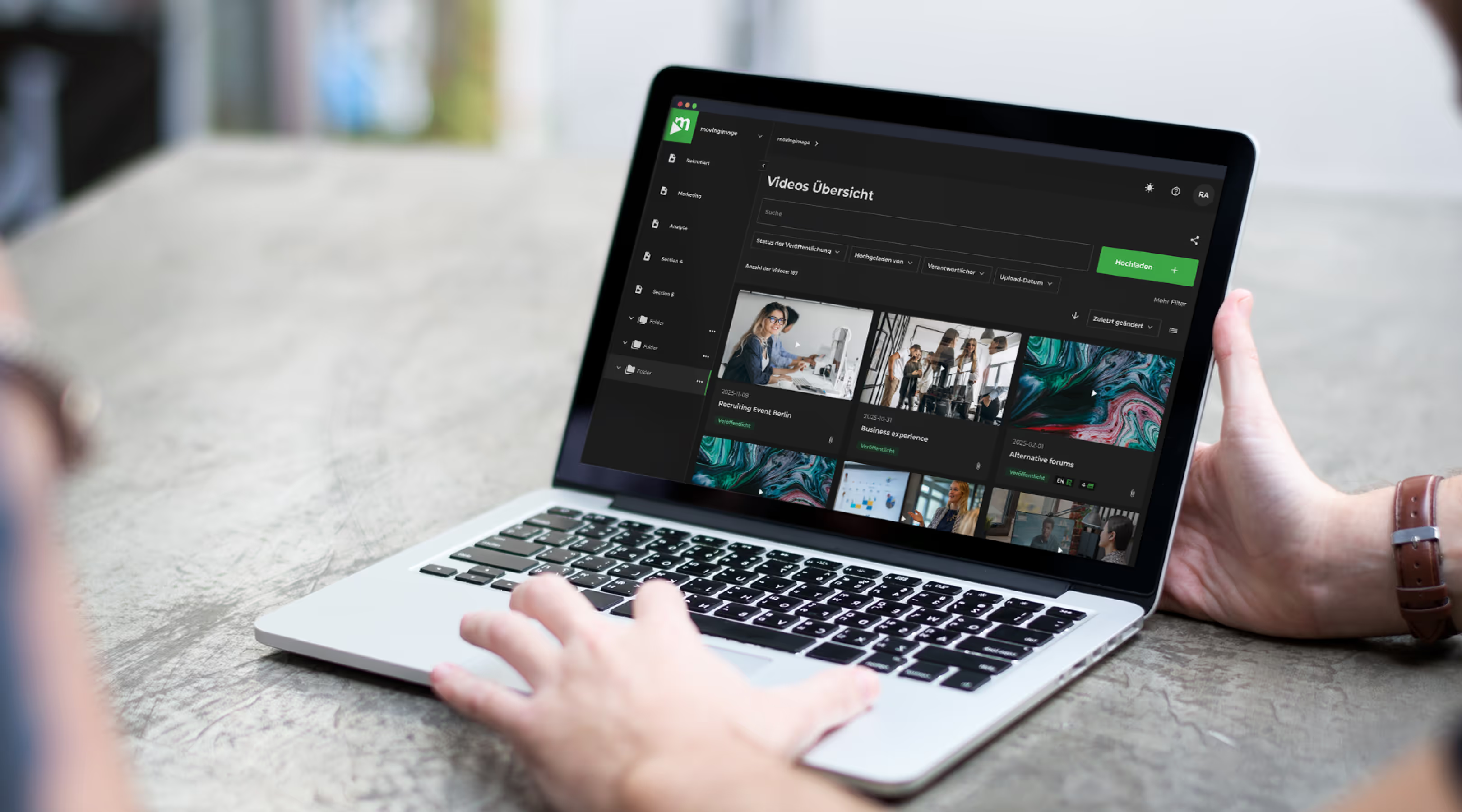Video in the public sector: quick start, clear use cases, smooth workflow

Driving your success with video

Video in the public sector: quick start, clear use cases, smooth workflow
The shift in citizen communications
Expectations of the public sector are changing fast. People don’t just want to submit forms online—they want to understand what’s happening in their city or municipality. They expect transparent processes, simple digital services, and up-to-date information—ideally on demand, accessible, and in plain language.
At the same time, public administrations are undergoing profound structural change. Alongside growing workloads and mounting digitalization pressure, demographics are reshaping the future: a large share of experienced employees will retire in the coming years. By 2030, around 30% of administrative staff are expected to leave the workforce in Germany. This calls for strategic action, modern processes, and new ways to preserve knowledge and communicate efficiently.

Traditional channels—notice boards, press releases, or telephone hotlines—are reaching their limits. Modernizing communication has become essential.
This is where video technology makes a decisive difference. Whether live streams, explainers, or a digital information portal: video builds closeness, makes complex topics tangible, and reduces follow-up questions. With the right solution, videos can be created and managed securely, GDPR-compliantly, and without technical expertise.
This is how digital administration becomes truly citizen-oriented.
Why video in the public sector? The 5 key benefits
Digital transformation in the public sector isn’t a future topic—it’s happening now. Video communication plays a pivotal role: it combines efficiency with citizen focus and makes information accessible, clear, and human. Here are the core benefits of using video in public administration:
Make complex topics easy to grasp
Videos translate “administration-speak” into plain language—visual, structured, and easy to follow. That reduces misunderstandings and helps people find their way faster.
Transparency that builds trust
Livestreams and on-demand recordings make decisions visible and permanently traceable. Explaining takes less effort—and legitimacy grows.
Accessible participation for everyone
Multilingual subtitles, sign language, and audio description ensure content is usable for all—inclusive and compliant.
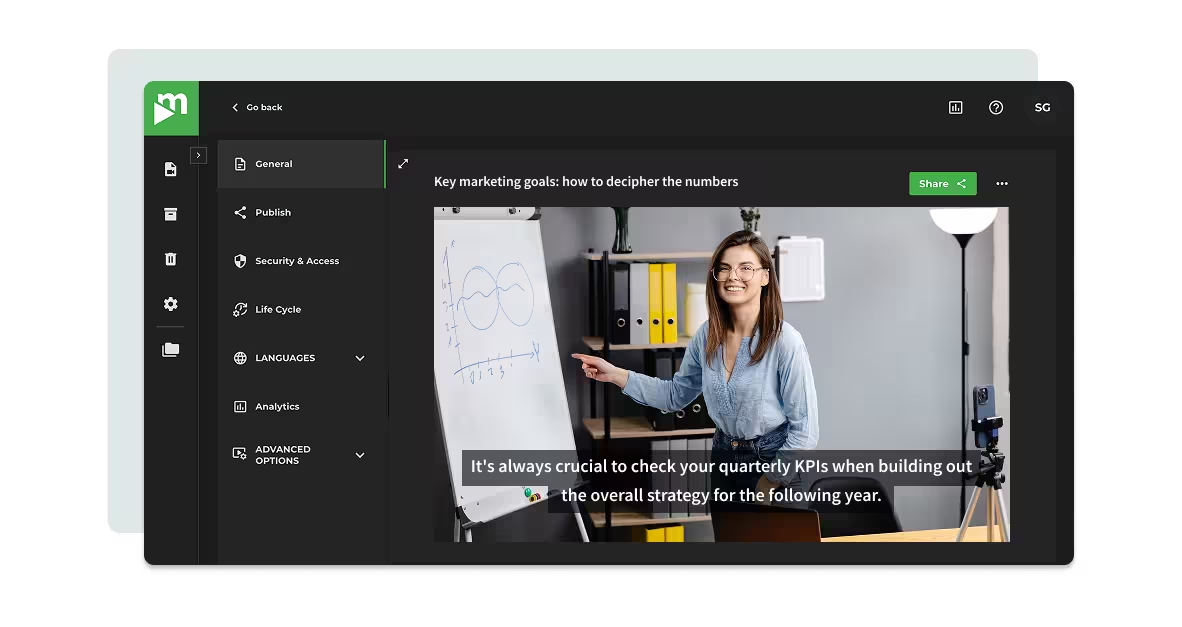
Operational efficiency
Produce once, use often: standardized answers and consistent quality noticeably relieve teams—and the impact is measurable.
Security & knowledge retention
A GDPR-compliant platform, clear access controls, and documented expertise keep content protected and preserve institutional know-how over the long term.
Video use cases in the public sector: practical examples
Video technology is already part of modern public administration. Whether for citizen communications, political transparency, or internal knowledge sharing, video unlocks a wide range of applications that meaningfully simplify day-to-day work.
1. Citizen information and public services
Many questions recur every day: How do I apply for a residential parking permit? How does bulky waste collection work? How do I book an appointment online? Short, easy-to-understand explainers can answer these common requests around the clock—accessible and available in multiple languages.
This not only relieves call centers and service desks, it also improves the citizen experience: instead of searching for information, people get a clear visual walkthrough—optionally with subtitles, sign language, or translations.
2. Transparent politics and administration
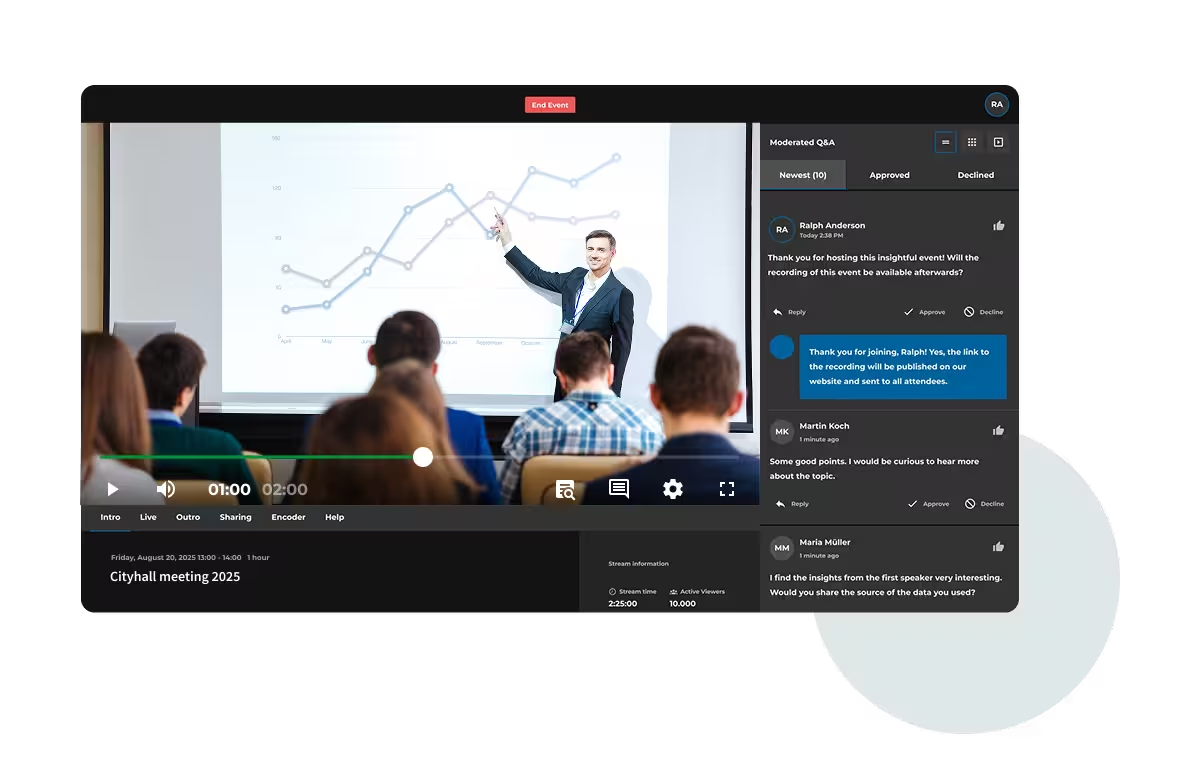
Video strengthens trust in public institutions. Broadcasts of council and committee meetings offer insights into decision-making that were previously hard to access. Livestreams—enhanced with automatic captions and an intuitive media library—let citizens follow proceedings in real time or find specific topics on demand.
The result is more traceable local governance—and greater openness and credibility.
3. Digital inclusion and accessibility
A modern administration communicates for everyone—regardless of language, age, or disability. Video supports this mission with subtitles, plain language, sign-language interpretation, and translations.
For complex processes—like childcare registration, eID usage, or tax matters—this lowers barriers and significantly reduces follow-up questions.
4. Internal communication and training
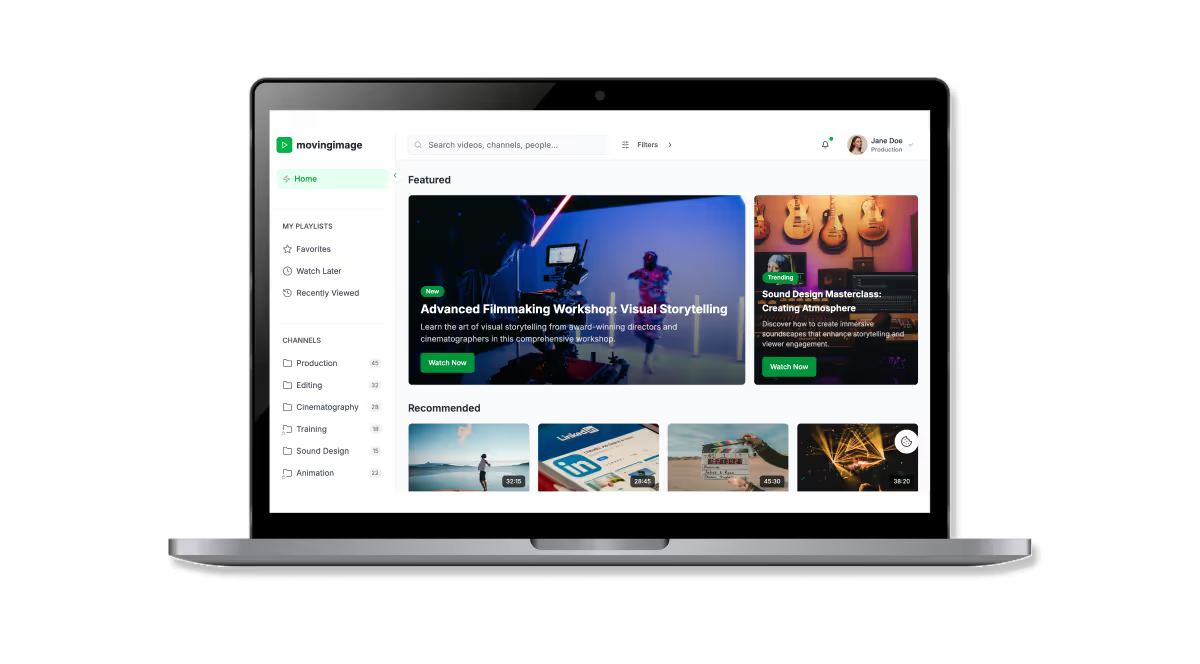
Video also has major impact internally. From new software and data-protection policies to procedural updates, learning and information videos make knowledge available anytime. This is especially crucial given the generational shift in the public sector: experienced employees can pass on their expertise through tutorials or short experience clips.
The outcome is a digital knowledge base that new colleagues can rely on long term.
5. Public relations and place branding
Many cities and municipalities already use video to showcase projects and initiatives—from a new civic center to sustainability campaigns. Short project updates, event videos, or interviews with officials make municipal work more relatable and strengthen local identity.
In short, video is far more than a communication tool—it’s a lever for efficiency, transparency, and participation in tomorrow’s public administration.
How it works: a typical video workflow in public administration
Video communication can sound like a heavy lift—yet in practice it’s surprisingly easy to put into action. With the right tools, you can integrate the entire process—from livestreaming to publishing—step by step into day-to-day operations.
The workflow below shows how cities, municipalities, and public authorities can use video efficiently—without extra tech teams or complex processes.
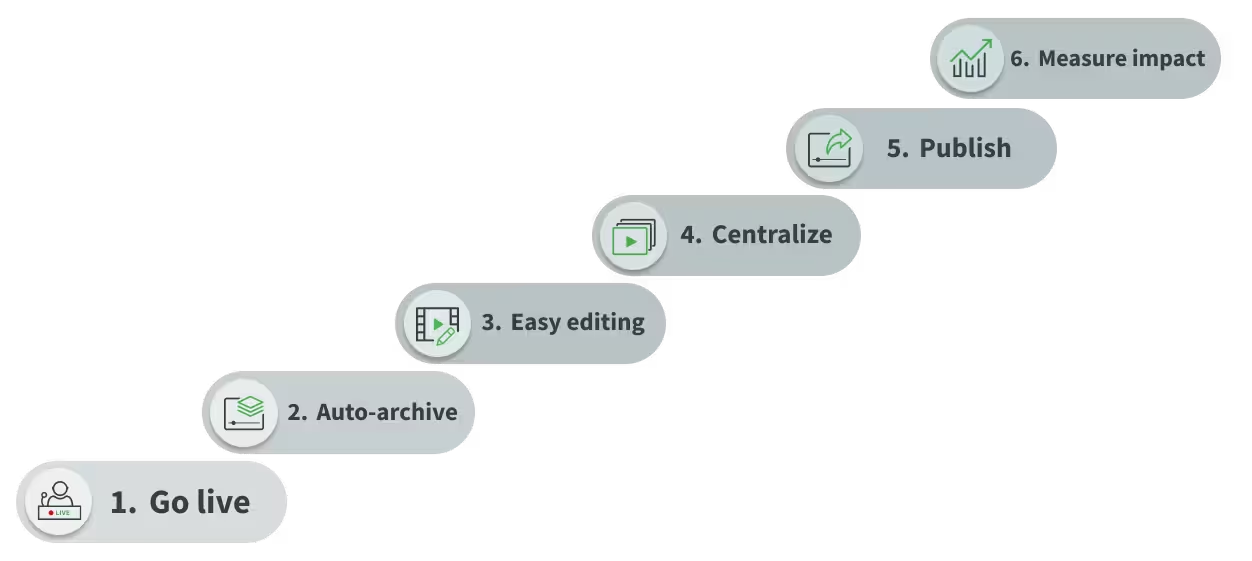
1. Go live
Council meetings, press briefings, or town halls can be streamed with minimal setup—right from the chamber, the town hall, or on the go. A laptop, a camera, a stable internet connection, and professional streaming software are usually enough for high-quality output. Automatic captions and accessibility options ensure everyone can follow along in real time, regardless of location or ability.
2. Auto-archive
No extra work after the stream: every broadcast is automatically recorded and stored securely. The result is a central media library where videos remain available—publicly or for internal documentation.
3. Easy editing
If needed, recordings can be polished in minutes without editing expertise. A short intro, a logo overlay, or trimming pauses is often all it takes to achieve a professional look.
4. Centralized management
All videos are stored GDPR-compliantly and organized centrally—with clear access rights for different departments. Administrations retain full control over content, approvals, and publishing—without external data storage.
5. Easy publishing
Finished videos can be published with a few clicks—on the municipal website, the intranet, or your own video portal. Embedding works via link or embed code, without complex IT integration. Content can be time-limited or restricted to specific audiences as needed, and delivered in accessible formats.
6. Measure impact
Analytics reveal how content is used, which topics resonate, and where viewers drop off. These insights help you refine your video strategy and improve outcomes over time.
Together, these steps form a seamless workflow that fits neatly into existing structures—from the first idea to transparent, citizen-centric communication.
Conclusion: start small—and noticeably improve citizen communications
Video in the public sector is a practical lever for greater efficiency, transparency, and participation. Getting started is easy, and the impact is immediate: fewer follow-up inquiries, clearer information, preserved institutional knowledge, and digital citizen communications that truly land.
With a professional video platform and a reliable software and service partner, you can run the entire process securely, GDPR-compliantly, and accessibly—from the first idea through live streaming and light editing to publishing and measuring success.
Our Speakers
The shift in citizen communications
Expectations of the public sector are changing fast. People don’t just want to submit forms online—they want to understand what’s happening in their city or municipality. They expect transparent processes, simple digital services, and up-to-date information—ideally on demand, accessible, and in plain language.
At the same time, public administrations are undergoing profound structural change. Alongside growing workloads and mounting digitalization pressure, demographics are reshaping the future: a large share of experienced employees will retire in the coming years. By 2030, around 30% of administrative staff are expected to leave the workforce in Germany. This calls for strategic action, modern processes, and new ways to preserve knowledge and communicate efficiently.

Traditional channels—notice boards, press releases, or telephone hotlines—are reaching their limits. Modernizing communication has become essential.
This is where video technology makes a decisive difference. Whether live streams, explainers, or a digital information portal: video builds closeness, makes complex topics tangible, and reduces follow-up questions. With the right solution, videos can be created and managed securely, GDPR-compliantly, and without technical expertise.
This is how digital administration becomes truly citizen-oriented.
Why video in the public sector? The 5 key benefits
Digital transformation in the public sector isn’t a future topic—it’s happening now. Video communication plays a pivotal role: it combines efficiency with citizen focus and makes information accessible, clear, and human. Here are the core benefits of using video in public administration:
Make complex topics easy to grasp
Videos translate “administration-speak” into plain language—visual, structured, and easy to follow. That reduces misunderstandings and helps people find their way faster.
Transparency that builds trust
Livestreams and on-demand recordings make decisions visible and permanently traceable. Explaining takes less effort—and legitimacy grows.
Accessible participation for everyone
Multilingual subtitles, sign language, and audio description ensure content is usable for all—inclusive and compliant.

Operational efficiency
Produce once, use often: standardized answers and consistent quality noticeably relieve teams—and the impact is measurable.
Security & knowledge retention
A GDPR-compliant platform, clear access controls, and documented expertise keep content protected and preserve institutional know-how over the long term.
Video use cases in the public sector: practical examples
Video technology is already part of modern public administration. Whether for citizen communications, political transparency, or internal knowledge sharing, video unlocks a wide range of applications that meaningfully simplify day-to-day work.
1. Citizen information and public services
Many questions recur every day: How do I apply for a residential parking permit? How does bulky waste collection work? How do I book an appointment online? Short, easy-to-understand explainers can answer these common requests around the clock—accessible and available in multiple languages.
This not only relieves call centers and service desks, it also improves the citizen experience: instead of searching for information, people get a clear visual walkthrough—optionally with subtitles, sign language, or translations.
2. Transparent politics and administration

Video strengthens trust in public institutions. Broadcasts of council and committee meetings offer insights into decision-making that were previously hard to access. Livestreams—enhanced with automatic captions and an intuitive media library—let citizens follow proceedings in real time or find specific topics on demand.
The result is more traceable local governance—and greater openness and credibility.
3. Digital inclusion and accessibility
A modern administration communicates for everyone—regardless of language, age, or disability. Video supports this mission with subtitles, plain language, sign-language interpretation, and translations.
For complex processes—like childcare registration, eID usage, or tax matters—this lowers barriers and significantly reduces follow-up questions.
4. Internal communication and training

Video also has major impact internally. From new software and data-protection policies to procedural updates, learning and information videos make knowledge available anytime. This is especially crucial given the generational shift in the public sector: experienced employees can pass on their expertise through tutorials or short experience clips.
The outcome is a digital knowledge base that new colleagues can rely on long term.
5. Public relations and place branding
Many cities and municipalities already use video to showcase projects and initiatives—from a new civic center to sustainability campaigns. Short project updates, event videos, or interviews with officials make municipal work more relatable and strengthen local identity.
In short, video is far more than a communication tool—it’s a lever for efficiency, transparency, and participation in tomorrow’s public administration.
How it works: a typical video workflow in public administration
Video communication can sound like a heavy lift—yet in practice it’s surprisingly easy to put into action. With the right tools, you can integrate the entire process—from livestreaming to publishing—step by step into day-to-day operations.
The workflow below shows how cities, municipalities, and public authorities can use video efficiently—without extra tech teams or complex processes.

1. Go live
Council meetings, press briefings, or town halls can be streamed with minimal setup—right from the chamber, the town hall, or on the go. A laptop, a camera, a stable internet connection, and professional streaming software are usually enough for high-quality output. Automatic captions and accessibility options ensure everyone can follow along in real time, regardless of location or ability.
2. Auto-archive
No extra work after the stream: every broadcast is automatically recorded and stored securely. The result is a central media library where videos remain available—publicly or for internal documentation.
3. Easy editing
If needed, recordings can be polished in minutes without editing expertise. A short intro, a logo overlay, or trimming pauses is often all it takes to achieve a professional look.
4. Centralized management
All videos are stored GDPR-compliantly and organized centrally—with clear access rights for different departments. Administrations retain full control over content, approvals, and publishing—without external data storage.
5. Easy publishing
Finished videos can be published with a few clicks—on the municipal website, the intranet, or your own video portal. Embedding works via link or embed code, without complex IT integration. Content can be time-limited or restricted to specific audiences as needed, and delivered in accessible formats.
6. Measure impact
Analytics reveal how content is used, which topics resonate, and where viewers drop off. These insights help you refine your video strategy and improve outcomes over time.
Together, these steps form a seamless workflow that fits neatly into existing structures—from the first idea to transparent, citizen-centric communication.
Conclusion: start small—and noticeably improve citizen communications
Video in the public sector is a practical lever for greater efficiency, transparency, and participation. Getting started is easy, and the impact is immediate: fewer follow-up inquiries, clearer information, preserved institutional knowledge, and digital citizen communications that truly land.
With a professional video platform and a reliable software and service partner, you can run the entire process securely, GDPR-compliantly, and accessibly—from the first idea through live streaming and light editing to publishing and measuring success.



.avif)


.avif)






.avif)
